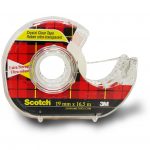Culture Media
Published: June 4th, 2009
Revised: September 24th, 2009
A number of environmental sampling methods exist that allow samples to be taken directly on culture media. The most common methods are viable air samplers such as RCS and Andersen samples as well as contact surface slides. If proprietary sampling media are used, ensure that the expiry date is current. In accordance with our internal quality assurance protocols, stale-dated sampling media cannot be processed.  On RCS sample strips, the expiry date is usually hot-stamped on the tongue of the strip on the end where the strip is opened. Petri plates prepared by media supply houses normally stamp expiry dates on the plate bottom. If you are uncertain, please do not hesitate to contact us for assistance.
On RCS sample strips, the expiry date is usually hot-stamped on the tongue of the strip on the end where the strip is opened. Petri plates prepared by media supply houses normally stamp expiry dates on the plate bottom. If you are uncertain, please do not hesitate to contact us for assistance.
Once samples are taken, ensure that the medium container or transport sleeve is re-sealed with tape to protect the agar from drying during incubation. Samples where the growth medium shows signs of drying may produce inaccurate results, and will be noted on the laboratory report. Agar strips or plates should be clearly labeled using an indelible marker (e.g. “Sharpie” permanent markers) and packaged in a clean sample pouch (e.g. a Ziploc freezer bag) along with a completed laboratory submission form, and packed in a padded envelope or small box for shipping. Insulating materials may be of value in maintaining a constant temperature for your samples during shipping. Ice packs should not be used as cooling may damage the sampling media. Strips or plates must be received at the laboratory no later than 24 hr after the samples were taken. We regret that samples received beyond this time-frame or those lacking a submission form cannot be processed.
Swab Samples
Published: June 4th, 2009
Revised: January 29th, 2019
 Swab samples for mycological analysis must be taken using dry swabs re-packaged in transport tubes without transport medium. The types of swabs used by physicians for clinical specimens should not be used for the collection of environmental fungal samples.
Swab samples for mycological analysis must be taken using dry swabs re-packaged in transport tubes without transport medium. The types of swabs used by physicians for clinical specimens should not be used for the collection of environmental fungal samples.
For the collection of bacterial swab samples, we recommend the use of Amies gel transport medium without charcoal. In our experience, this is the best general purpose transport medium for bacterial swab samples. We can ship out suitable collection swabs at a nominal charge, or direct you to a suitable brand and supplier. Swab samples must be received at the laboratory no later than 48 hours after the samples were taken. We regret we cannot process samples received beyond this time-frame.
Bulk & Tape Lift Samples
Published: June 4th, 2009
Revised: August 13th, 2009
Samples must be submitted in clearly labeled specimen bags or other suitable packet with one sample only per packet. Multiple sample packets should be sealed together inside an envelope or box with a completed sample submission form attached. Any bulk materials that are damp or moist must be contained in a water-proof packet. Damp materials must be received at the laboratory no later than 48 hours after sampling. Samples arriving beyond this time frame cannot be processed. Please note that work will not proceed without a completed sample submittal form.
Examples of containers that are SUITABLE for submitting samples include:
- Ziploc bags;
- WhirlPaks;
- Polycarbonate specimen bottles.
Examples of containers that are NON-SUITABLE include:
- All things made of glass (e.g. jars or tubes);
- Letter envelopes;
- Shopping bags;
- Fast-food containers such as disposable paper or Styrofoam cups.
 Tape lift samples should be taken using an optically clear tape such as 3M Scotch Brand “Transparent Tape” in the red tartan package (commonly available through office supply stores and elsewhere). Other adhesive tapes such as masking tape, magic tape, duct tape, etc. are unsuitable. Two to three inches of tape should be pressed firmly against the surface to be sampled. Once taken, the tape lift should be affixed on the interior side of a sturdy plastic bag such as a Ziploc freezer bag. During analyses, a mounting solution must be placed in direct contact with the suspected mould sampled on the adhesive side of the tape. As such, we are unable to process tape lifts where the adhesive side has been folded over onto itself as well as samples where the tape that cannot be peeled away from the bag surface (e.g. plastic sandwich bags).
Tape lift samples should be taken using an optically clear tape such as 3M Scotch Brand “Transparent Tape” in the red tartan package (commonly available through office supply stores and elsewhere). Other adhesive tapes such as masking tape, magic tape, duct tape, etc. are unsuitable. Two to three inches of tape should be pressed firmly against the surface to be sampled. Once taken, the tape lift should be affixed on the interior side of a sturdy plastic bag such as a Ziploc freezer bag. During analyses, a mounting solution must be placed in direct contact with the suspected mould sampled on the adhesive side of the tape. As such, we are unable to process tape lifts where the adhesive side has been folded over onto itself as well as samples where the tape that cannot be peeled away from the bag surface (e.g. plastic sandwich bags).



